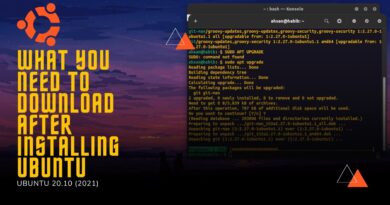Q46 – What is Firecracker? #aws #serverless #firecracker #containers #microvm #vm #virtualmachine
New Challenges for Virtualization
Today, our customers can use serverless computing to build applications without worrying about provisioning or managing infrastructure. Developers can package their code as serverless containers with AWS Fargate or serverless functions with AWS Lambda. Our customers tell us they love the low operational overhead of serverless, and we believe it will continue to play a pivotal role in the future of computing.
As our customers increasingly adopted serverless, we realized that existing virtualization technologies were not developed to optimize for the event-driven, sometimes short-lived nature of these kinds of workloads. We saw a need to build virtualization technology specifically designed for serverless computing. We needed something that could give us the hardware virtualization-based security boundaries of virtual machines, while maintaining the smaller package size and agility of containers and functions.
Firecracker Technology
Meet Firecracker, an open source virtual machine monitor (VMM) that uses the Linux Kernel-based Virtual Machine (KVM). Firecracker allows you to create micro Virtual Machines or microVMs. Firecracker is minimalist by design – it includes only what you need to run secure and lightweight VMs. At every step of the design process, we optimized Firecracker for security, speed, and efficiency. For example, we can only boot relatively recent Linux kernels, and only when they are compiled with a specific set of configuration options (there are 1000+ kernel compile config options). Also, there is no support for graphics or accelerators of any kind, no support for hardware passthrough, and no support for (most) legacy devices.
Firecracker boots a minimal kernel config without relying on an emulated bios and without a complete device model. The only devices are virtio net and virtio block, as well as a one-button keyboard (the reset pin helps when there’s no power management device). This minimal device model not only enables faster startup times (less than 125 ms on an i3.metal with the default microVM size), but also reduces the attack surface, for increased security. Read more details about Firecracker’s promise to enable minimal-overhead execution of container and serverless workloads.
In the fall of 2017, we decided to write Firecracker in Rust, a modern programming language that guarantees thread and memory safety and prevents buffer overflows and many other types of memory safety errors that can lead to security vulnerabilities. Read more details about the features and architecture of the Firecracker VMM at Firecracker Design.
Firecracker microVMs improve efficiency and utilization with a low memory overhead of less than 5 MiB per microVMs. This means that you can pack thousands of microVMs onto a single machine. You can use an in-process rate limiter to control, with fine granularity, how network and storage resources are shared, even across thousands of microVMs. All hardware compute resources can be safely oversubscribed, to maximize the number of workloads that can run on a host.
We developed Firecracker with the following guiding tenets (unless you know better ones) for the open source project:
Built-In Security
Light-Weight Virtualization
Minimalist in Features
Compute Oversubscription
We open sourced this foundational technology because we believe that our mission to build the next generation of virtualization for serverless computing has just begun.
Firecracker Usage
AWS Lambda uses Firecracker as the foundation for provisioning and running sandboxes upon which we execute customer code. Because Firecracker provides a secure microVM which can be rapidly provisioned with a minimal footprint, it enables performance without sacrificing security. This lets us drive high utilization on physical hardware, as we can now optimize how we distribute and run workloads for Lambda, mixing workloads based on factors like active/idle periods, and memory utilization.
Previously, Fargate Tasks consisted of one or more Docker containers running inside a dedicated EC2 VM to ensure isolation across Tasks. These Tasks now execute on Firecracker microVMs, which allows us to provision the Fargate runtime layer faster and more efficiently on EC2 bare metal instances, and improve density without compromising kernel-level isolation of Tasks. Over time, this will allow us to continue to innovate at the runtime layer, giving our customers even better performance while maintaining our high security bar, and lowering the overall cost of running serverless container architectures.
Firecracker will also enable popular container runtimes such as containerd to manage containers as microVMs. This allows Docker and container orchestration frameworks such as Kubernetes to use Firecracker. We have built a prototype that enables containerd to manage containers as Firecracker microVMs and would like to with with community to take it further.
by Analogies Cloud
linux foundation




Excellent 😊